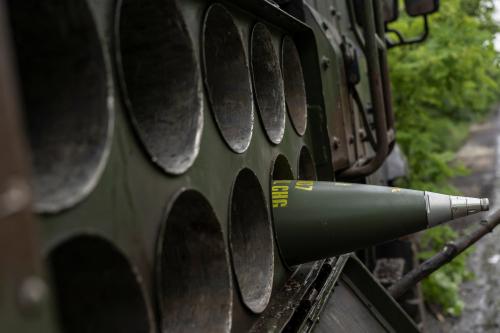The government of Peña Nieto changed the national discourse on organized crime and violence in Mexico. It requested that the media banish homicides from its front pages in order to calm citizens’ anxieties and assure foreign investors that the government held control over insecurity. The means to assert this control transferred greater autonomy to the armed forces, as well as to state and municipal police, institutions lacking appropriate training for law enforcement. In September 2014, both the armed forces and the municipal police are alleged to have killed and caused the disappearance of groups of citizens. These violent acts, as well as the murder of prominent politicians, have raised the specter that a new level of violence has returned to Mexico – this time carried out by official bodies as well as organized crime.
Allegations Against the Armed Forces and Local Police
On July 29, Secretary of the Interior Osorio Chong announced that “violence has been reduced to its minimum expression.”[1] He chose to ignore the fact that one month earlier members of the armed forces had killed 22 people. In late September, the secretary of defense admitted that military elements in Tlatlaya (located in the State of Mexico), had carried out the homicides. Photographs of 19 of those bodies show that they were shot while kneeling in the dirt from a range of 30 to 50 centimeters.
In the state of Veracruz, students marched in late September to protest the military and the police’s use of excessive force against, so-called organized criminals. On September 29, in the town of Iguala, the attorney general for the state of Guerrero, Iñaky Blanco Cabrera, announced that he had begun investigations into police slaying of three students, two passengers and a passerby in an incident concerning the football team, Los Avispones, as it was bussed to its game. Ballistic tests showed that members of the municipal police had shot into the bus. Separately, Iñaky Blanco also admitted that municipal police had shot at students from the radical teacher training school, Ayotzinapa Normal, who were also moving out of Iguala in three busses. Forty-three of those students disappeared on September 26, 20 to 30 of whom are believed to have been arrested and taken to an unknown location. Since that time, they have not been found. On Sunday, September 28, the state leader of the conservative party, PAN (National Action Party), was murdered. The purported massacres and disappearances, allegedly at the hands of the military and local police have raised alarm bells in Mexico.
Past and Present PRI Policies
The distinction between the six years of violence against drug cartels under President Felipe Calderón and now is that Mexico’s armed forces as well as municipal and state police are accused and, in several cases, found guilty of carrying out the crimes. The state has assumed the role as guardian of public order and in so doing has carried out widespread abuses of citizens’ human rights. Students, struggling to find jobs commensurate with their professional studies, are demonstrating throughout the country in support of the 43 missing and presumed dead Ayotzinapa students. Today, students throwing bricks at glass buildings make up front page stories.
In citizens’ minds, the coincidence of timing reminds them of October 2, 1968, when thousands of students gathered in protest in the plaza of Tlatelolco, as well as within the Escuela Normal, the most prestigious high school in Mexico City. Approximately 300 died or disappeared. At that time, the students were accused of Marxist Leninist tendencies and President Echeverría’s minister of interior ordered their suppression. The vivid memory of that period lives on among a generation who now qualify for a pension. The PRI (Institutional Revolutionary Party) government of 46 years ago was authoritarian, centralized and abhorred protest that might destabilize the country.
Today, a new PRI government has returned to power after 12 years in opposition. With pride, party leaders assert that strong governance to protect citizen security has returned. Journalists are threatened by drug cartels. State and local officials pressure them into publishing bland reports, usually based on police statements. As a result, self-censorship is becoming the norm. A reading of newspaper articles regarding the Tlatlaya and Iguala killings requires the reader to rely upon the statements of state prosecutors, the mayor’s office and the press officer for Mexico’s armed forces. Searches for stories from victims’ families and witnesses are not to be found in the mainstream press. Fortunately, opinion makers are free to publish and continue to provide effective freedom of expression, but otherwise Mexico’s media is seriously restrained in what it publishes.
The Human Rights Commission has become a puppet of Mexico’s Ministry of Interior. It took weeks before it decided to investigate the Tlatlaya killings at the hands of the military and its report is still not finished. A vocal defender of human rights was asked to leave the commission, her term of office terminated prematurely.
An Increasingly Skeptical Public
The government of Peña Nieto is determined to rebuild confidence in the state’s capacity to keep people safe and to assure foreign investors that Mexico is open for business. The government’s much respected statistical office, INEGI (National Institute of Statistics and Geography), was required to publish intentional homicide numbers without waiting for the customary review period. As a result, Osorio Chong’s announcement on July 29 that homicides related to organized crime had fallen by close to 30 percent year on year was received with askance by citizens who suffer the widespread extortion and consequential brutality on a regular basis. Disappearances are now common and investigations rare. This has led the Catholic Church and religious leaders to join the demands of family members for information into the whereabouts of their loved ones.
In a world of social media, it is foolish to believe that the government can clamp down on news that it finds unacceptable. The old-time leaders of the PRI may remember how they used to limit the diffusion of unsavory stories, but their grandchildren can share with them narratives and images of daily occurrences gathered through the internet. The Mexican government may be unusually skilled in propaganda, but it cannot hide incidents of insecurity from its citizens.
The events of September 2014 are a wakeup call to both Mexican citizens and their government. Members of the armed forces can no longer impose vigilante justice against 22 men and women, even if they are suspected of membership in La Familia’s drug cartel. Municipal police can no longer cause 43 students to disappear despite the suspicion of vandalism. An increasingly skeptical nation, as well as outside observers, watches the repression of Mexican citizens with growing concern.
If the Mexican state is to be trusted, its officers must carry out their functions with respect for the law. If the state abuses its authority, organized criminal gangs which trade in illicit drugs and people, will emerge the winners because their criminal acts can be attributed easily to public officials. Despite government assurances, Mexican citizens do not know whom to fear more: criminals or state protected officers. This is a sad condition for Mexico, but one that can be corrected. Peña Nieto and his government have announced that they will prosecute and punish identified military and police personnel, but the legal process must be transparent and the sanction must comply fully with the pertinent laws.
[1] SEGOB, Secretario Osorio Chong, Conferencia de Prensa, 29 de Julio, 2014. http://www.paraosc.segob.gob.mx/



Commentary
Peña Nieto Confronts Renewed Violence in Mexico
October 3, 2014